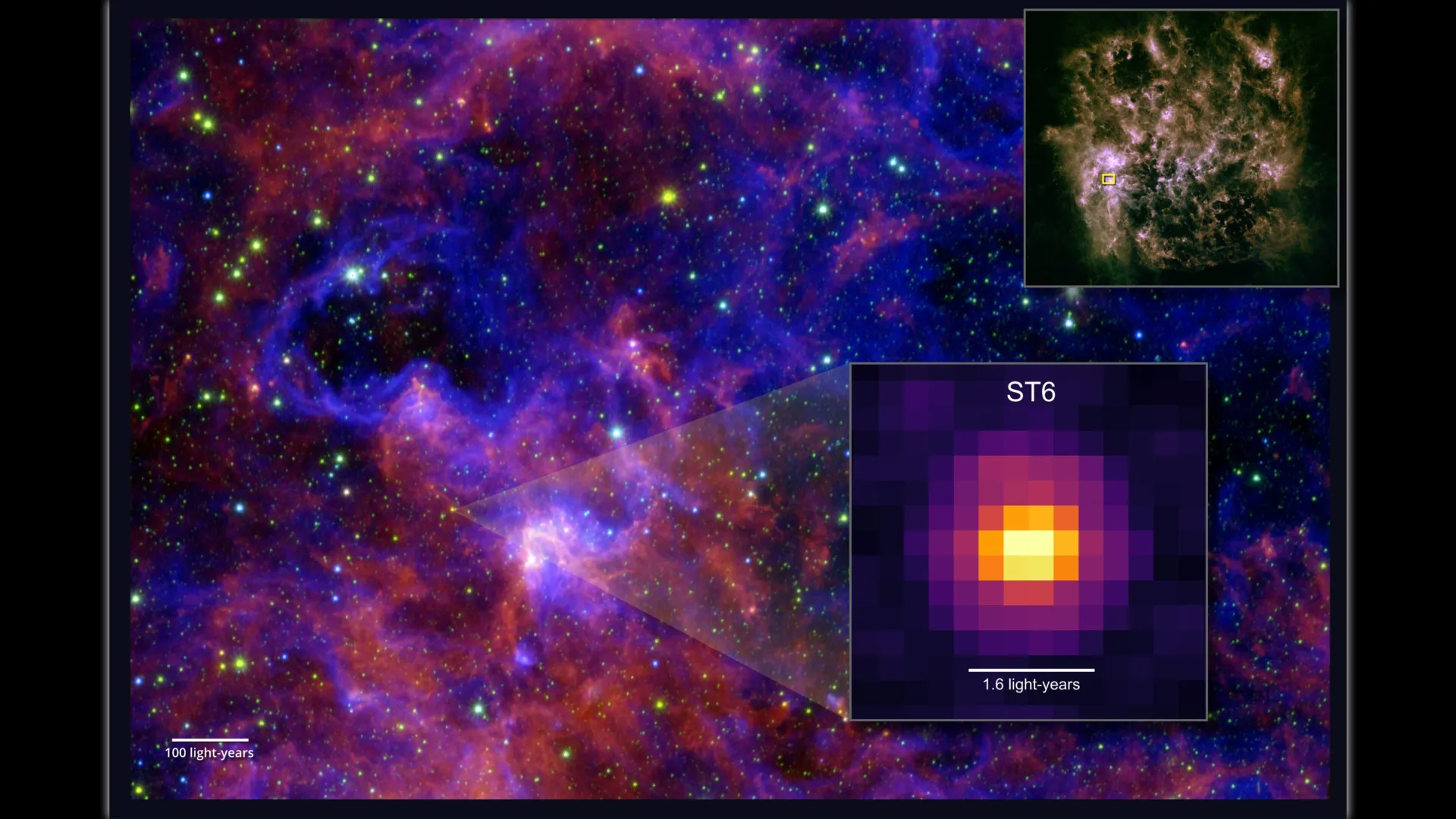UPDATE: Astronomers using NASA’s James Webb Space Telescope have made a groundbreaking discovery, revealing complex organic molecules frozen in ice around a young star in the Large Magellanic Cloud, located approximately 160,000 light-years from Earth. This finding, announced on October 20, 2025, marks the first detection of acetic acid beyond the Milky Way.
This remarkable revelation could reshape our understanding of how life’s essential ingredients spread throughout the universe. The research team, led by University of Maryland scientist Marta Sewilo, identified five carbon-based compounds within the icy surroundings of a forming star known as ST6. The implications of these findings are profound, suggesting that the building blocks of life may have formed much earlier and under a wider range of conditions than scientists previously believed.
The study, published in the Astrophysical Journal Letters, highlights the detection of five complex organic molecules (COMs) in the ice around the protostar, including methanol, ethanol, methyl formate, acetaldehyde, and the groundbreaking discovery of acetic acid, the main ingredient in vinegar. While methanol was previously the only complex organic molecule confirmed in ice around protostars, this new data opens a new window on cosmic chemistry.
Marta Sewilo emphasized the significance of these findings: “The spectral resolution of JWST is sufficiently high to allow for reliable identifications.” The research indicates that organic compounds can survive the harsh conditions of planetary formation, potentially laying the groundwork for life to emerge on young planets.
The Large Magellanic Cloud, a low-metallicity galaxy with only about one-third to one-half the heavy elements found in our solar system, serves as an ideal laboratory for exploring the conditions of the early universe. This environment, characterized by intense ultraviolet radiation, provides insights into how complex organic chemistry can occur in settings with fewer heavy elements like carbon, nitrogen, and oxygen.
Co-author Will Rocha from Leiden University noted, “The detection of icy COMs in the Large Magellanic Cloud provides evidence that these reactions can produce them effectively in a much harsher environment.” The presence of these molecules suggests that the building blocks of life may have begun forming far earlier in the universe than previously thought.
This discovery does not confirm the existence of life elsewhere but indicates that the chemical precursors necessary for life could be widespread across the cosmos. The implications for future research are vast, as Sewilo and her team plan to investigate additional protostars in both the Large and Small Magellanic Clouds to better understand the abundance of these molecules.
As scientists continue to uncover the mysteries of the universe, this discovery adds another layer to our understanding of the origins of life and the conditions under which it may arise. The quest for answers about life’s existence beyond Earth is more urgent than ever, and the James Webb Space Telescope is paving the way for new possibilities in cosmic chemistry and astrobiology.
Stay tuned for more updates as this exciting research unfolds and reveals the secrets of our universe.






